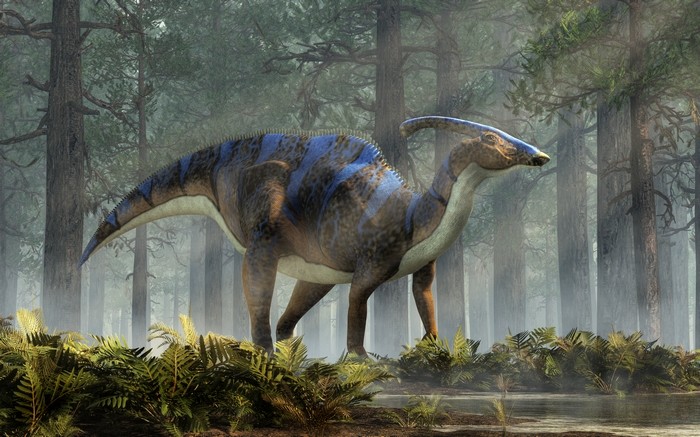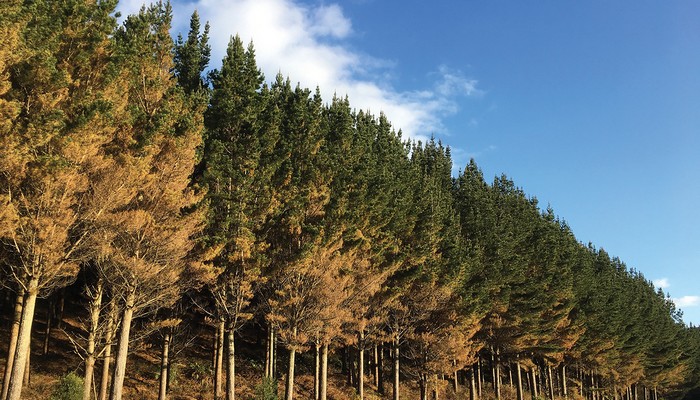Did dinosaurs dine on Phytophthora-infected plants?

It’s highly likely they did, based on the information decoded from the genes of Phytophthora kernoviae samples collected in New Zealand and Chile.
As part of the Healthy Trees, Healthy Future research programme, Scion plant pathologists working with an international team sequenced and compared the genomes of Phytophthora kernoviae from Chile and New Zealand.1
Both countries share common ancient plants that seem to have co-evolved with P. kernoviae. Scientists believe both the Chilean and New Zealand populations have descended from an ancient Gondwanan population.
The supercontinent Gondwanaland existed around 550 to 180 million years ago and its remnants today make up parts of Australia, New Zealand and South America with fossil records that show dinosaurs roamed the land.
Genetic secrets
Examining genomes can reveal close and more distant family relationships that give us clues as to how long an organism has existed, where it might have originated, and how it has evolved with time.
The genes within the populations of an organism change with time due to mutation, natural selection, geographic isolation and other evolutionary processes. Comparing the genomes from different populations lets us identify closely related strains with very similar genomes and more distant relatives and track the changes through populations. Frequently, points where the genomes differ by just a single nucleotide (SNP) are used as markers for comparing individuals.

New to the neighbourhood
The pathogen Phytophthora pluvialis causes red needle cast in radiata pine in New Zealand. It was first isolated in Oregon in 2002, then in New Zealand in 2008 and officially described as a new species in 2013.
Researchers from Scion, Massey University and Oregon State University compared the genomes of P. pluvialis from New Zealand with those from Oregon and identified 27 markers in the genomes of different strains.2 They then looked for those differences in P. pluvialis collected along the Pacific Coast of North America and from around New Zealand.
The USA population of P. pluvialis had twice the genetic diversity and a far greater number of differing genotypes compared to the New Zealand population. By plotting the changes in genotype through the populations, the researchers could see how different populations are organised within the overall population structure.
The samples from New Zealand fall into two unique clusters, but there is not yet enough information to identify where the New Zealand isolates originated from or confirm that the USA is the definitive origin of the pathogen. The teams are still working to get a definitive answer on this important question.
Better biosecurity
Information from pathogen DNA, such as knowing where pathogens like Phytophthora originate, can provide clues about preventing their entry to strengthen New Zealand’s biosecurity efforts. The additional information can also improve our capability to fight the inevitable next threat to our natural forests and primary industries.![]()
